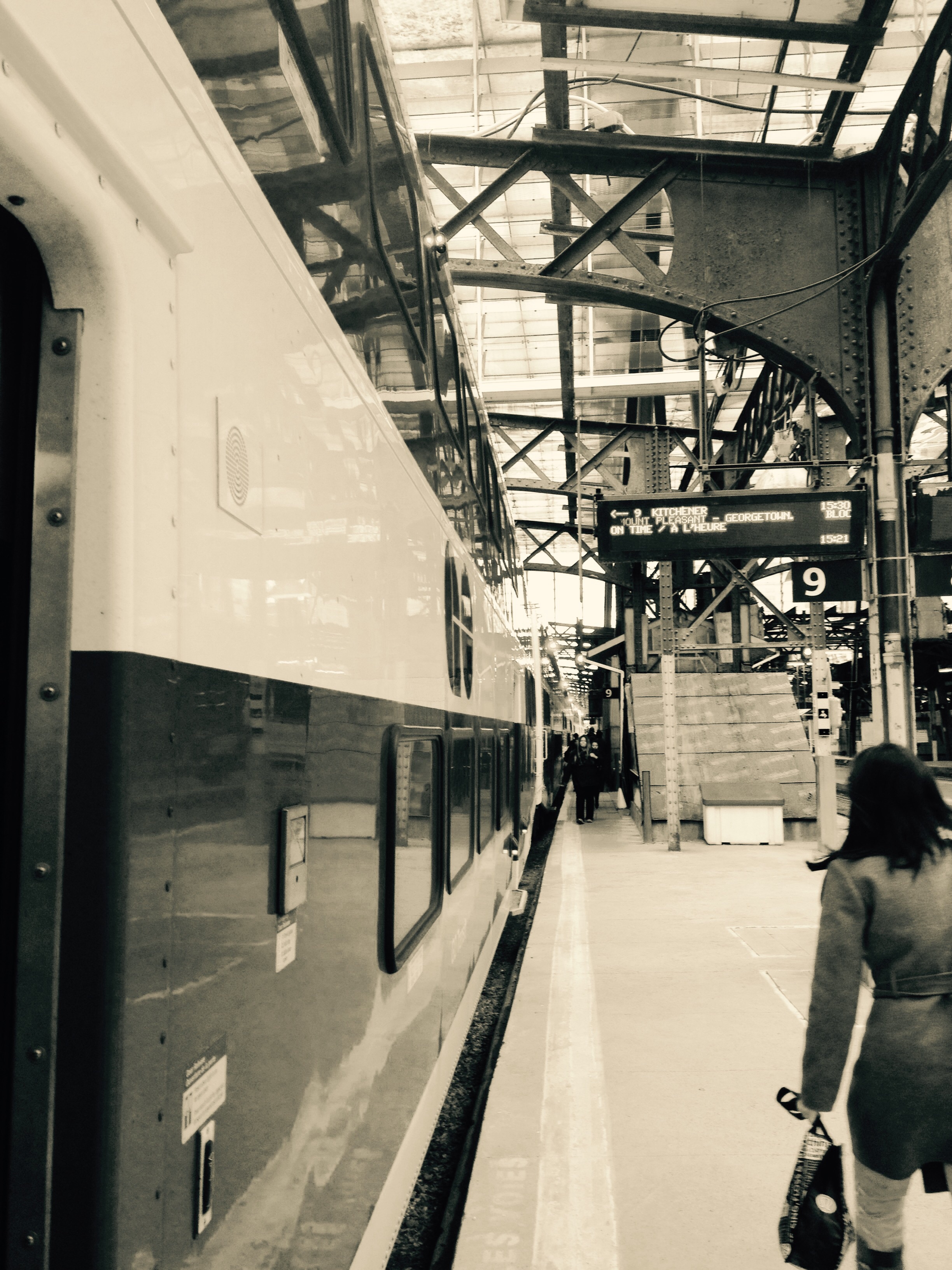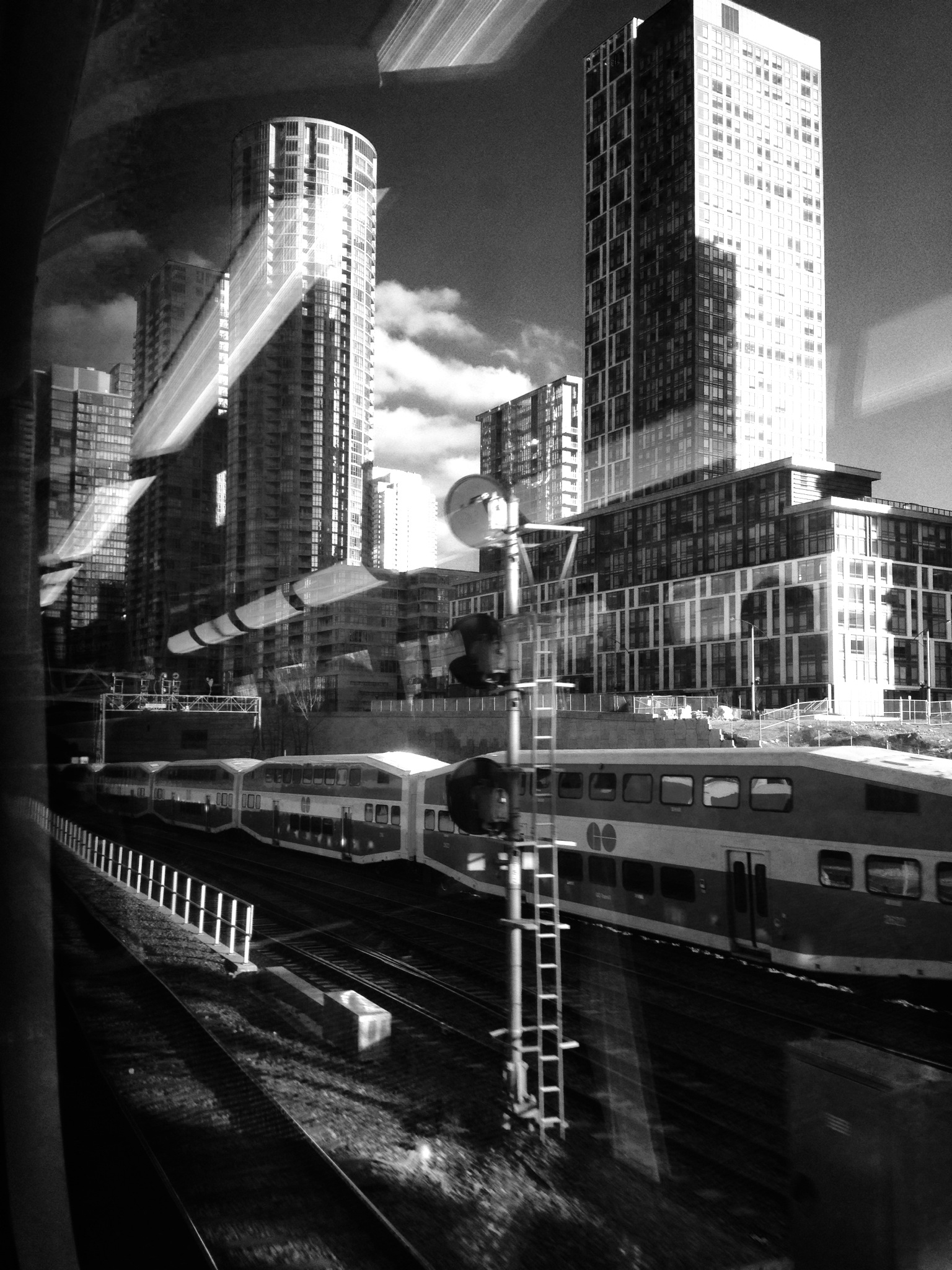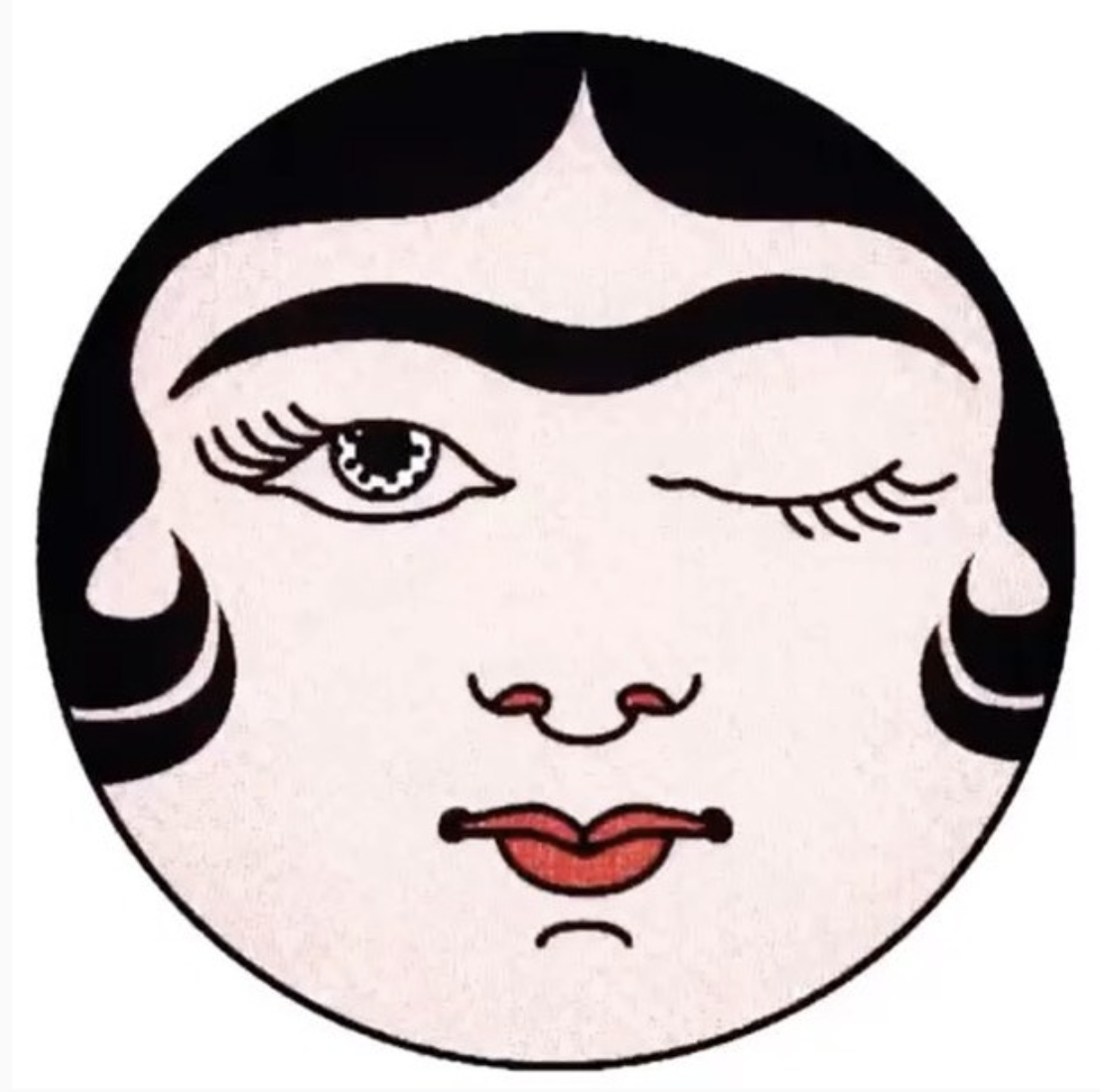Flux of the Commute: Photography review
By Nazanin Zarepour
27 Feb 2017
Originally appeared in the former Vulgaris Magazine, an indie photography e-pub based in Ottawa, ON.
27 Feb 2017
Originally appeared in the former Vulgaris Magazine, an indie photography e-pub based in Ottawa, ON.

For many, mornings under the circumstances of modern capitalism are characterized by the advent of a communal voyage to work—namely, commuting. The sphere of commuting is one in ever-present flux and motion in which time and place become ambiguous. We fall into a state of quasi-death and timelessness once we board the train, as the day only begins once the destination is reached. Del Bascus brilliantly stops time in the journey to and from work—she captures stillness and certainty in a realm that is oft wholly ambiguous.
Heraclitus’ doctrine of flux is not, “one cannot step into the same river twice”. On the contrary, the river always remains the same. What makes a river a river is for the water within it to be ever changing. What gives an object its identity is the constant state of flux and flowing of its containments. Transit is no exception to this rule—it is also characterized by motion. With our daily use of transit, the ever-changing characteristics within it become insignificant; time and space become of secondary importance. This throws us into a state of non-existence. As philosopher David Hume puts it in his book, “A Treatise of Human Nature”, “When I enter most intimately into what I call myself, I always stumble on some particular perception or other, of heat or cold, light or shade, love or hatred, pain or pleasure. (…) When my perceptions are removed for any time, as by sound sleep; so long am I insensible of myself, and may truly be said not to exist”. Bascus allows us to pause—to revel in perceptions.
Through windows of Toronto’s GOtrains, we are unable to find stillness and our daily reflections of the city become dull and mundane. Bascus, however, revives our perceptions and allows us to see the landscape through a critical and radical lens. Bascus characterizes her work to “evoke feelings associated with human frailty and isolationism as one is transported from a sanctuary to the heart of a mechanically constructed stark urban maze.” The images above have a sharp focus on lines—recurring contrast between lines of train tracks, bridges, and buildings are critical reflections on a heavily industrialized city. The condominiums and construction in the images have swallowed the sky and the landscape is painted with a monochromatic darkness that isolates all essence of human life. She interrupts our state of flux to awaken us with a sense of urgency; she urges us to bare witness to a suffocating environment we have been too busy to look at: a city centered on rationalism, production, and consumption.


